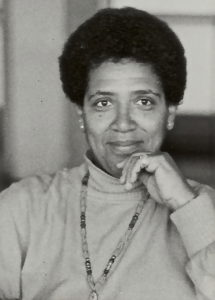Ralph Ellison’s Invisible Man draws attention to racial issues faced by blacks in the 1900’s and continues to be a relevant text today. Ellison comments on the reactions of whites and how the black community has adapted and conducts itself. We’ve discussed this in class, but one of Ellison’s biggest themes is the clash between the ideas of W.E.B. Du Bois and Booker T. Washington. Ellison doesn’t seem to support one over the other, but he does address the elitism that both ideologies bring. Only a few are raised above the rest, and they develop a sense of arrogance and superiority over the others. The protagonist of Invisible Man claims to be enlightened in a sense and even separates himself as an outsider, but at the same time, he wouldn’t be able to hold this position without an education and he still holds himself to a higher standing than those who can’t comprehend what he thinks. The themes of individual success versus the success of the entire community is one of the bigger themes throughout the novel, however, I can’t help but compare it to the Afro German movements that were heavily inspired by American Civil Rights Movements and African American thought.
In Germany, the idea of identity compared to African Americans was different, and their overall goal was different than their American counter parts. The Afro German movement was focused on
building and creating a community that didn’t exist. A common background for Afro Germans is that their fathers come from an African country to study or was a member of the American military while their mother is native German. Afro Germans deal with this dual identity of being African and German at the same time that is spurred on by racial issues, which aren’t too different from contemporary racial issues in the United States.

One of the most influential Afro German leaders was the poet May Ayim. Her poetry focused on the duality of Afro German identity and calling out German society for its racist past and overlooking marginalized groups. After reunification in 1990, waves of violence against minority groups broke out, but the media never repor ted on it. The community built by May Ayim, other Afro German activists, and even African American activists, like
ted on it. The community built by May Ayim, other Afro German activists, and even African American activists, like
Audre Lorde, were able to come together to support each other and start raising awareness, which would have been impossible a few decades earlier.
Most of Germany’s Afro German movements stemmed from the lack of community and connection with other Afro Germans. They didn’t have anyone to fall back to, so they had to build one themselves. African Americans already had a strong sense of community, so they had a network they could work with, making organizing easier and leading them to address different issues than their German counter parts. Their sense of identity isn’t in question like the Germans, but their forced place in society is. Despite their differences, they are still interconnected and working to an ultimate end goal. The don’t wish to be the targets of oppression or looked over by an oppressive majority. Major figures worked in both countries to raise awareness and to organize the communities to combat oppression.
I think your set-up is excellent, though in transitioning to the material on Afro-Germans, you note that both their ideas related to identity and their goals (and of course their histories) were quite distinct from the plights of characters in Ellison’s invisible man. It might have been better, then, to focus on a specific poem from this movement so you could draw a connection to how the “doubleness” of afro-german identity was expressed in ways similar to Ellison’s meditation on african-american identity. In any case, this is a potentially rich and fascinating connection that I’d like to look into more fully!